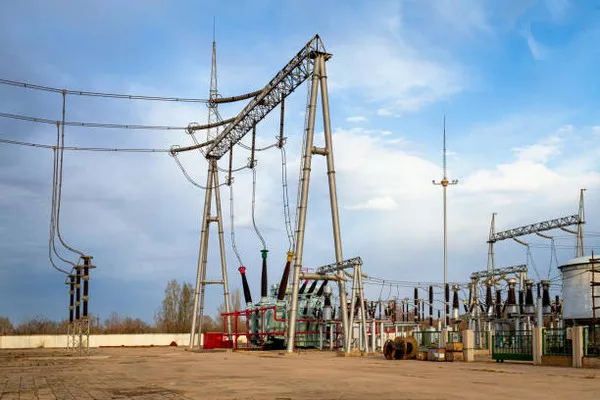Definition and Purpose:
A current transformer (CT) is a vital component in electrical systems, designed to measure alternating current (AC) safely and accurately. Its primary purpose is to step down high currents typically found in power lines to a level suitable for instrumentation and protective relays. By doing so, CTs enable efficient monitoring and control of electrical circuits, ensuring the reliability and safety of the overall system.
Principle of Operation:
Current transformers operate on the principle of electromagnetic induction. When an alternating current flows through the primary winding of the CT, it generates a magnetic field in the core. This magnetic field induces a proportional current in the secondary winding according to Faraday’s law of electromagnetic induction. By varying the number of turns in the primary and secondary windings, CTs can step down currents in a predictable ratio.
Components and Construction:
A typical CT comprises primary and secondary windings wound around a magnetic core. The primary winding, connected in series with the load, carries the current to be measured. The secondary winding, connected to measuring instruments or protective relays, produces a reduced current proportional to the primary current. The magnetic core, usually made of high-permeability materials like silicon steel, ensures efficient magnetic coupling between the windings. Insulation materials such as epoxy resin or oil impregnation provide electrical insulation and mechanical support.
Types of Current Transformers:
There are several types of current transformers available, each tailored to specific applications. Solid-core CTs offer high accuracy and are suitable for permanent installations. Split-core CTs, with their split design, allow easy installation without disconnecting the primary conductor. Wound primary CTs are used in high-current applications where solid-core or split-core CTs are impractical. Each type has its advantages and disadvantages, making them suitable for various scenarios in electrical systems.
Installation and Connection:
Proper installation and connection of CTs are crucial for accurate measurement and system safety. The correct orientation of the CT with respect to the primary conductor ensures proper polarity. Burden resistance, the total resistance connected to the secondary winding, must be within specified limits to maintain accuracy. Choosing the appropriate CT ratio based on the expected primary current is essential to prevent saturation and ensure optimal performance.
Accuracy and Calibration:
Accuracy is paramount in CT measurements, as inaccuracies can lead to erroneous readings and potentially hazardous conditions. Regular calibration of CTs is necessary to maintain accuracy over time. Calibration procedures typically involve comparing the CT’s output with a reference standard and adjusting it as needed. Adhering to international standards and guidelines ensures consistency and reliability in CT performance.
Safety Considerations:
Working with CTs requires strict adherence to safety precautions to prevent accidents and ensure personnel safety. Proper insulation of CTs and associated wiring protects against electric shock hazards. Avoiding open circuits in the secondary winding is crucial to prevent high voltages that can damage equipment or injure personnel. Grounding practices must comply with relevant safety standards to minimize the risk of electrical faults.
Applications:
Current transformers find widespread use across various industries, including power generation, distribution, and monitoring systems. In power generation, CTs are used to measure currents in generators and transformers for load management and protection. In distribution systems, CTs monitor load currents and detect faults for efficient operation and maintenance. In monitoring systems, CTs provide data for energy management and equipment diagnostics, enabling proactive maintenance and optimization.
Advancements and Future Trends:
Recent advancements in CT technology include digital CTs that integrate with digital monitoring systems for real-time data acquisition and analysis. Internet of Things (IoT) integration allows remote monitoring and control of CTs, enhancing system visibility and efficiency. Future trends may involve further miniaturization of CTs, improved accuracy through advanced sensing technologies, and integration with smart grid infrastructure for enhanced energy management and reliability.
Troubleshooting and Maintenance:
Common issues with CTs include saturation, ratio errors, and insulation degradation, which can affect measurement accuracy and system performance. Troubleshooting techniques involve checking for physical damage, verifying connections, and recalibrating if necessary. Routine maintenance tasks include cleaning, inspection, and testing to ensure proper functioning and longevity of CTs in electrical systems.
In conclusion, current transformers play a crucial role in electrical systems by accurately measuring high currents for monitoring and protection purposes. Understanding their principles of operation, proper installation, and maintenance is essential for ensuring reliable and safe operation of electrical systems across various industries. With ongoing advancements and future trends, CTs are poised to continue evolving to meet the growing demands of modern energy infrastructure.

